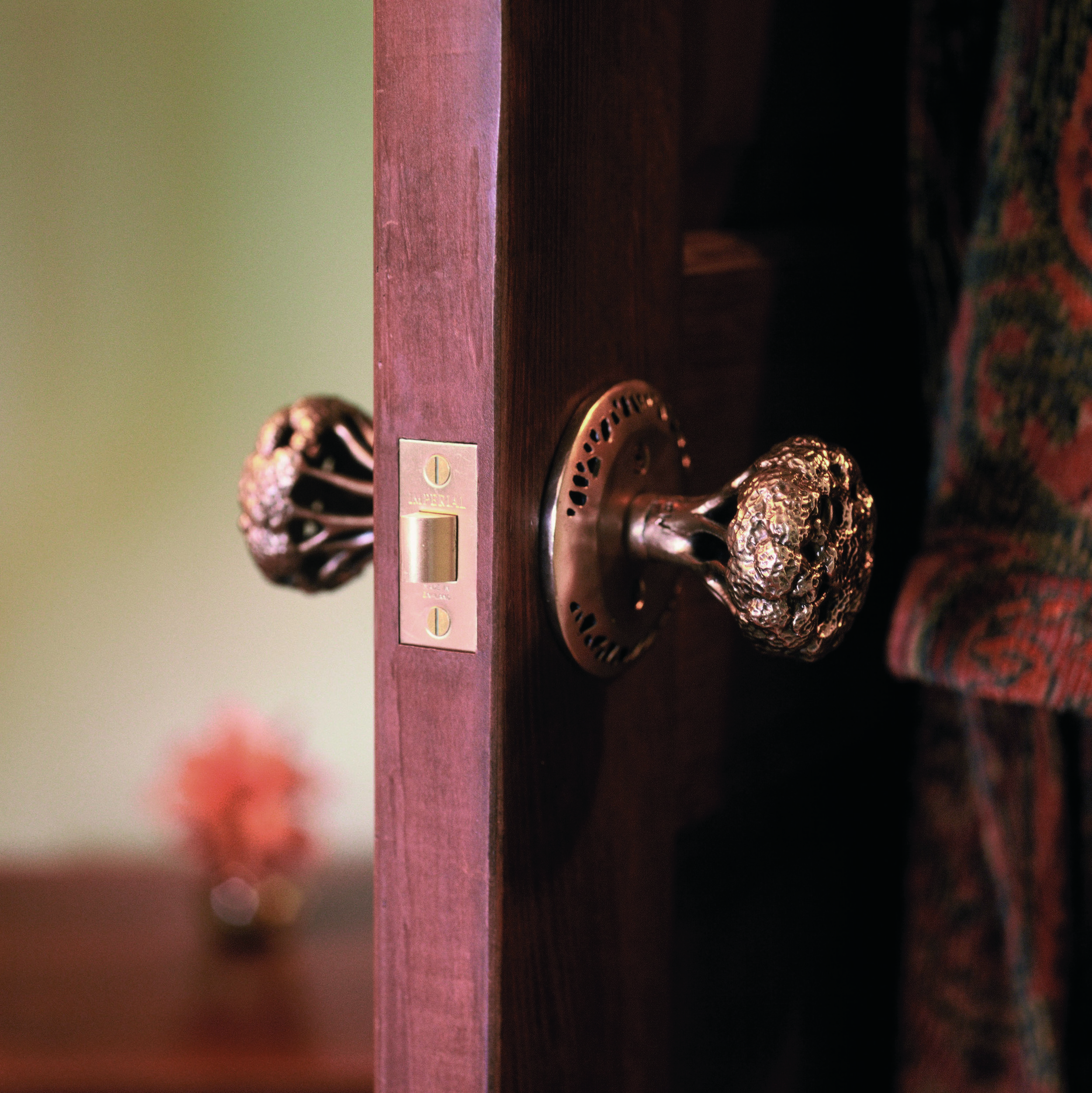Our door handles are made to order here in Los Angeles. Once a door handle set has been cast and before any patina is applied the pieces must be machined and assembled according to the door specifications. While previous posts have explained how back-sets and handing affect the choice of components little has been said about how the thickness and material of the door can impact the choice of door spindle.
In the context of door handles and accessory door hardware the spindle is a metal rod that passes through the door and can be used to perform different functions;
a. Act as a connector to connect the 2 knob/levers of the handle set and to turn the tubular latch.
b. As a connector to a turn piece that will pass mid-way through the door to turn or throw a latch bolt.
c. To connect door knobs/levers where there is tubular latch that can be locked or unlocked using a pin that is pushed in or pulled back. In this instance, one half of the spindle swivels so that when turned the knob or lever will unlock the door typically from the inside as would be the case in a powder room. A half swivel spindle also enables a door to be opened where a mortise lock is used, in both these cases only half the spindle swivels otherwise the door could be opened from both sides. As a side note to keep the knob or lever on the swivel end taught an auxiliary spring is trapped at the end of the spindle and placed under pressure part way into the center of the spindle, this keeps the knob in place despite the frequent rotation of the spindle.
I am reluctant to ever use the word “standard” in any hardware context, but interior doors are often 1 3/8” or 1 ¾” deep and we would use respectively a 2 ½” and 3 ½” spindle.
A Hedgerow passageway knob set has just been ordered for a 5” thick door and so we are making 2 custom spindles, one at approximately 8” for the knob set and the second at 6” for the turn piece described above which is shorter as it will only be passing through half of the door. The door is unusually thick as both sides will be upholstered adding a pliancy element to the equation that may impact the final door thickness. As the upholstery is likely to contain soft padded material the installer may need to shorten the spindle, so the fabric is compressed slightly around the escutcheon so that the knobs are sufficiently tight.



